When I started foraging & learning which plants were edible, I learned that a lot of plants are drinkable as teas. However, there are few that actually taste good!
Here is a short list of plants in the Pacific Northwest that make tasty teas.
These plants are generally harvestable during summer, blooming around June, July, and early August here on Vancouver Island, though the timing may vary slightly elsewhere in BC.
Fireweed aka Willow Herb
Scientific Name: Chamaenerion angustifolium
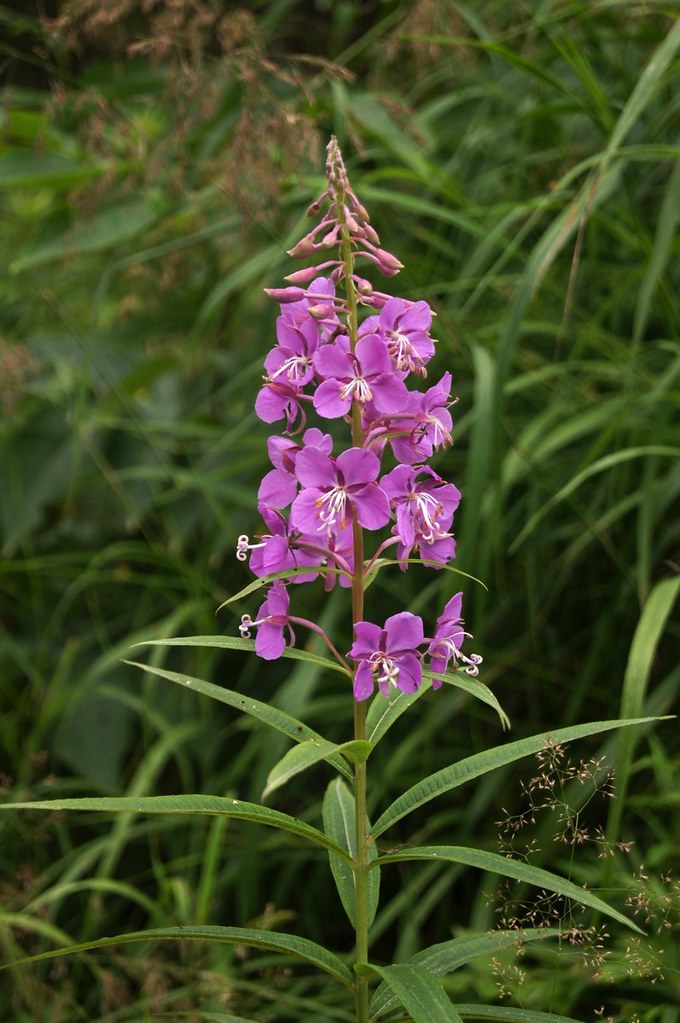
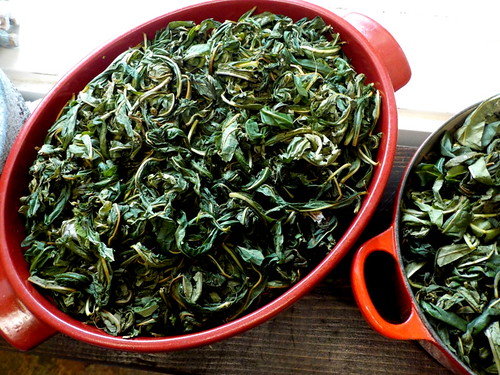
Fireweed is a beautiful plant known for its striking tall spikes of pink-purple flower blooms.
As a tea: The leaves and flowers can be used to make a mild, slightly sweet tea that tastes very much like orange pekoe and is a fantastic base for more interesting wild-crafted teas.
Preparation: I’m working on a full article about fermenting Fireweed tea, but the basic process of fireweed tea is to roll it in your hands to bruise it, put it in a jar with sunlight for a few days, then dry or dehydrate it.
Many folks refer to this as “fermenting” fireweed however, others say it is “oxidizing”. Either way, these extra steps really do make a difference & boost the flavor and aroma!
Where to find: Fireweed thrives in open areas, especially those recently disturbed by fire, hence its name.
In semi-urban areas you’ll see fireweed in fields, on the edges of parks, meadows, clearings, driveways & roadsides. But, avoid gathering near busy roads, instead look at trails built through or near disturbed land such as logging roads.
In Campbell River: Try trails next to the Campbell River & Quinsam Rivers, also you’ll find them in the slashes if you drive around on the backroads.
Safety notes: Don’t confuse Fireweed with the toxic Foxglove. ☠️Both are tall, skinny plants, with pink flower spikes on top that bloom around the same time in similar landscapes, but otherwise very dissimilar plants!
I’ve been foraging for decades, but only recently decided to try making fireweed tea. I’m so glad I did. It’s fun to harvest & make + it tastes great! and it inspired me to write this article.
More Information: UBC E-Flora | Fireweed – Wikipedia
Pineapple Weed aka Wild Chamomile
Scientific Name: Matricaria discoidea
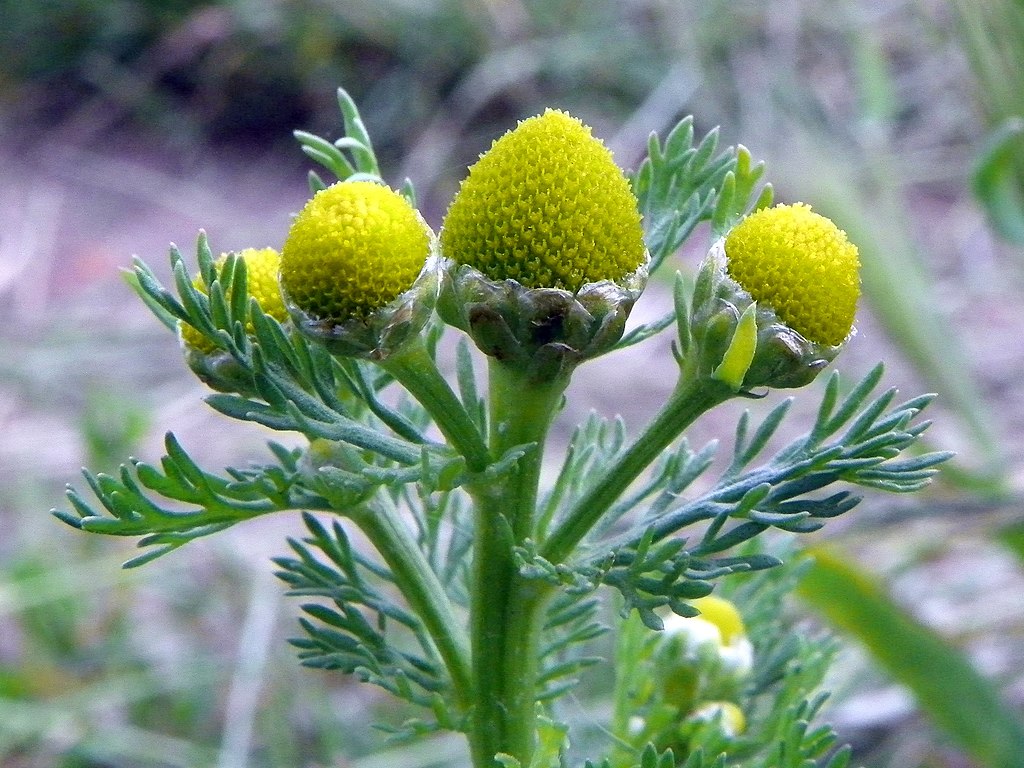
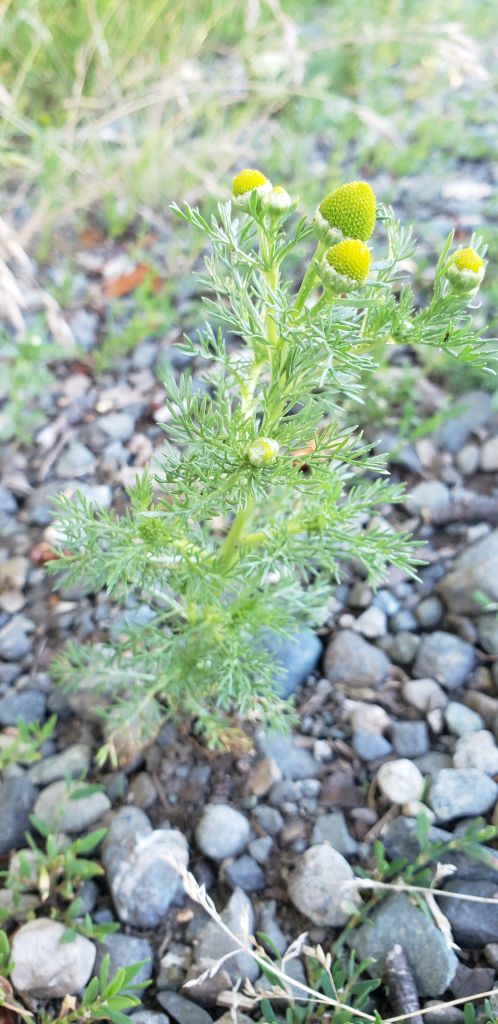
Pineapple weed is a low-growing, aromatic plant with cone-shaped, yellow-green flower heads and finely divided leaves. When crushed, it emits a scent reminiscent of pineapple.
As a Tea: The flowers and leaves can be steeped to produce a calming, chamomile-like tea with a nice lightly-fruity flavor.
I find Pineapple Weed goes well in a wild herbal tea blends combining well with fireweed & young blackberry leaves for a fruity tea, or with lemon balm & lavender for a night-time tea.
Where to find: Look down in disturbed areas with compacted soil such as graveled trails, sidewalk cracks, and high-traffic areas..
More Information: UBC E-Flora Pineapple Weed – Wikipedia
St. John’s Wort
Scientific Name: Hypericum perforatum
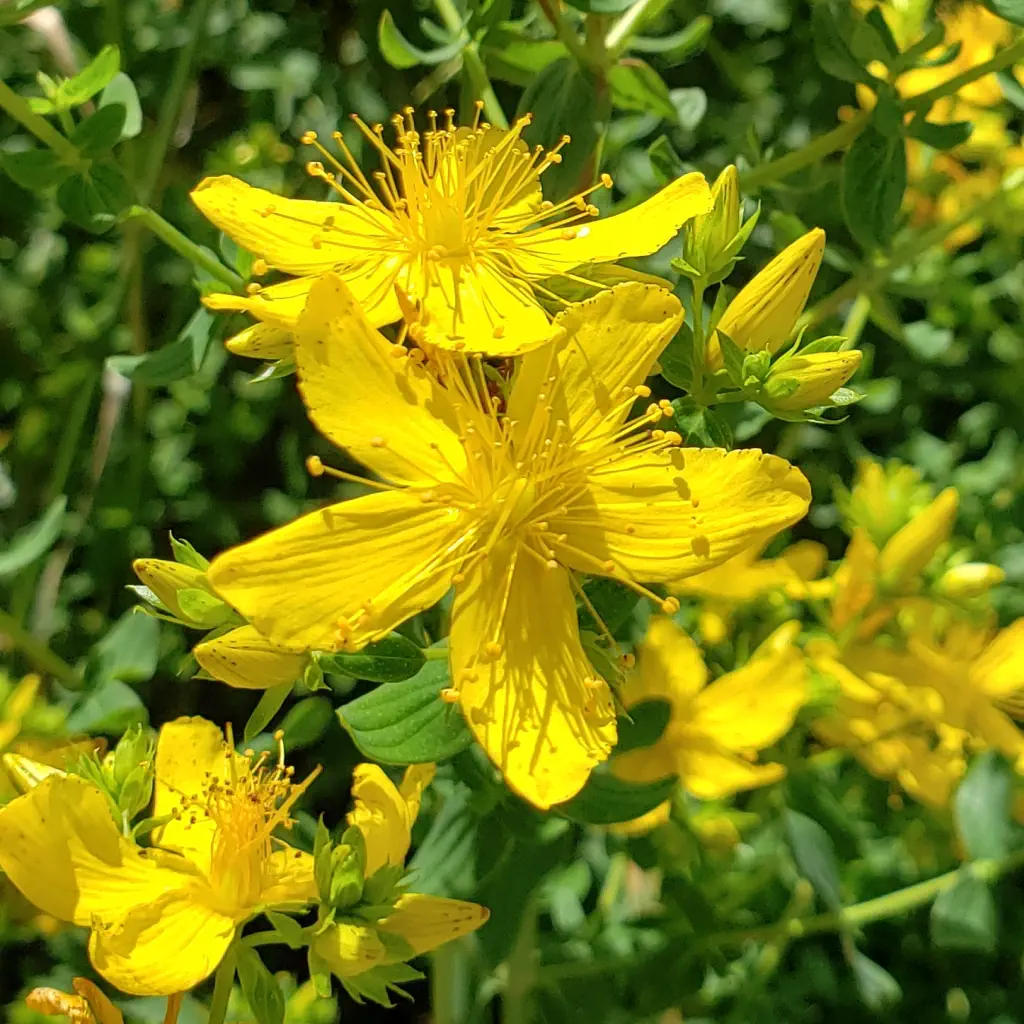
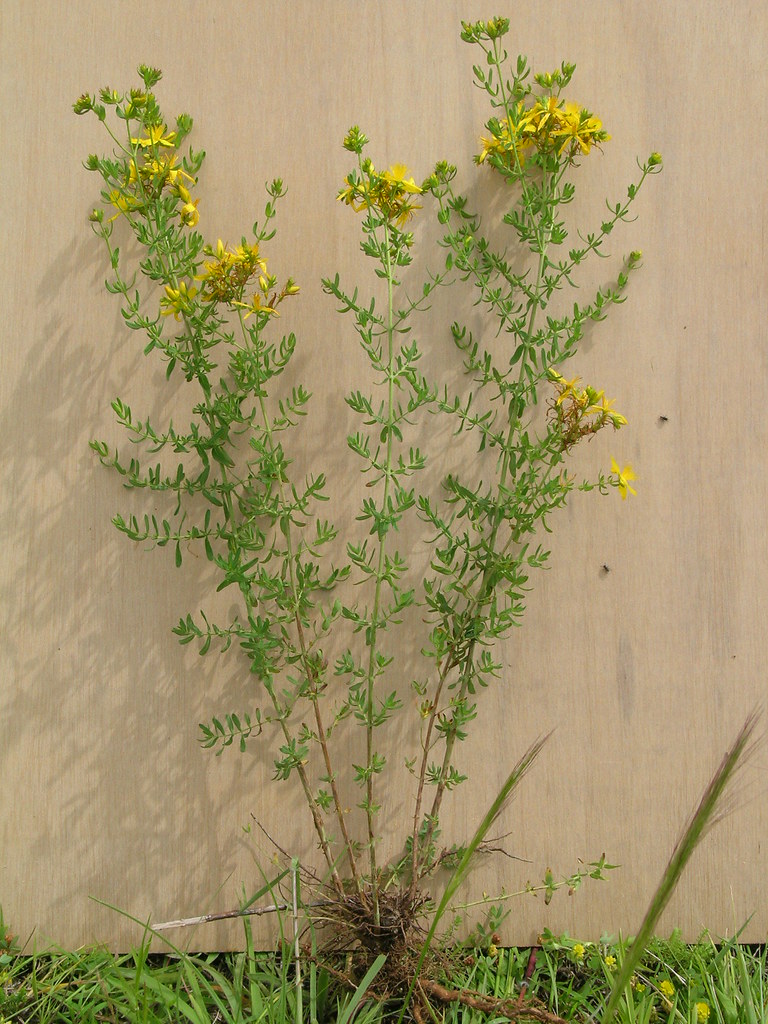
St. John’s Wort has bright yellow flowers featuring five petals and prominent stamens. When you hold the leaves up to the light, they look like they have tiny holes poked through them.
As a Tea: The flowering tops & leaves of wild St. John’s Wort can be easily harvested to make herbal teas. It’s one of my favorite teas for both flavor and effect. I personally get a slight buzz of relaxation from drinking the tea. But, not in a sleepy way. Hard to explain!
Preparation: I prepare the tea a little differently than most: my favorite is to mix fresh and dried leaves/flowers into a tea. I also suggest brewing at a lower temperature than boiling — this seems to cut back on the bitterness.
Where to find: St. John’s Wort is common & found in bright sunny spots around, at the edges of parks, in abandoned fields, and along trails.
In Campbell River, one spot I’ve seen a lot of St John’s Wort is along the ERT.
Safety note: While St. John’s Wort extracts used as medicine can have side effects, St. John’s Wort as Tea is considered safe. But, those with health conditions should ask a Doc about to confirm it’s ok.
More Information: E-Flora BC | St. John’s Wort – Wikipedia
Pearly Everlasting
Scientific Name: Anaphalis margaritacea
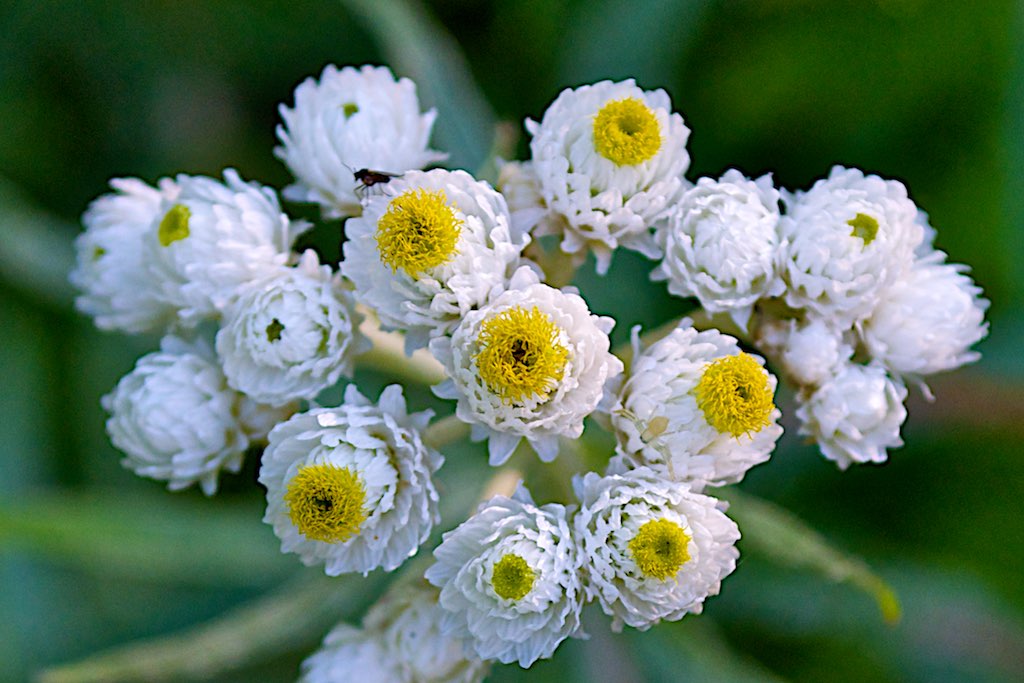
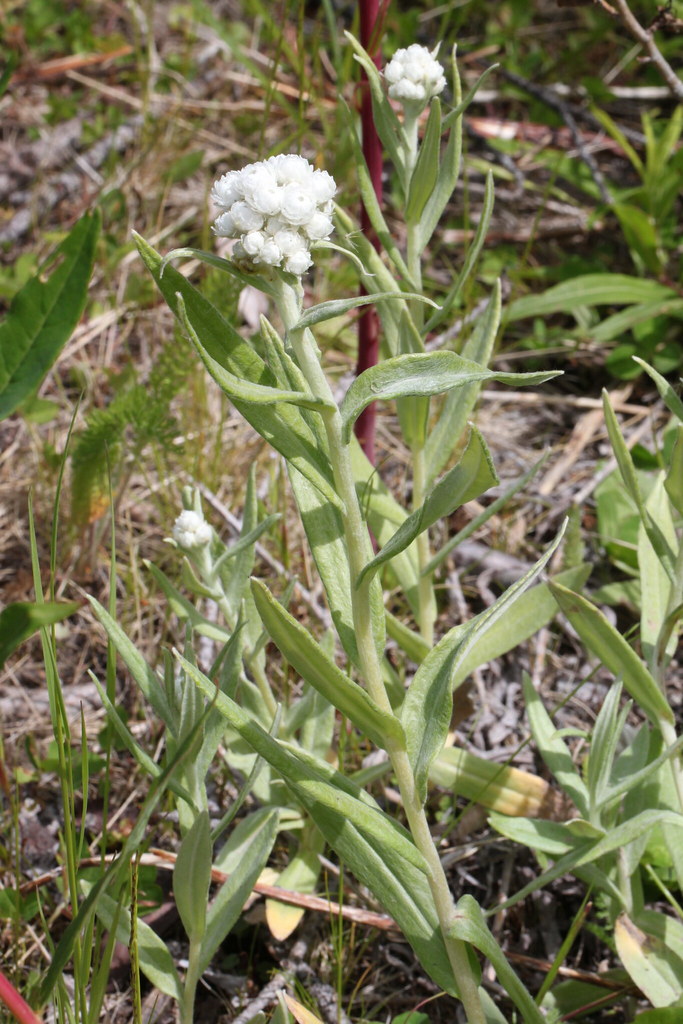
Pearly Everlasting is characterized by clusters of small, white, papery flowers and woolly stems and leaves.
Traditional uses: Traditionally, it has been used in herbal medicine, and the dried flowers and leaves can be brewed into a tea believed to have soothing properties.
As a tea: Fresh or dried leaves add a soothing quality to teas. (personally I wouldn’t use it on its own as a tea, but it makes a nice accompaniment to medicinal tea blends)
Where to find: Along graveled and well-travelled trails, meadows, logging areas.
In Campbell River there are lots of patches along the ERT, my favorite spot for Pearly Everlasting & St. John’s Wort is where the ERT trail runs through Beaver Lodge Lands.
Timing: Gather the leaves for tea in the summer. You’ll need to identify the plant by the leaves right now, as they won’t be in bloom yet. The flowers will be forgeable in a month or so.
More Information: E-Flora BC | Pearly Everlasting – Wikipedia
Mullein
Scientific Name: Verbascum thapsus


Mullein is a fuzzy plant with thick, soft leaves that feel like velvet and look silvery-gray, growing flat against the ground in its first year.
In the second year, it shoots up a tall, sturdy stalk covered in bright yellow flowers that looks like a giant fuzzy torch.
As a tea: Mullein makes a tasty, earthy, slightly sweet tea.
To prepare mullein tea, dried leaves or flowers are steeped in hot water, and the resulting infusion is often strained to remove fine hairs that may cause irritation.
Where to find: Like most of the teas, these tend to follow humans. They like poor soil near humans. You’ll find in abandoned fields, alleys, and next to gravel & cement.
Safety notes: For foraging, avoid gathering Mullein (or anything meant to consume) next to trafficked roads. Mullein and many plants have a habit of concentrating heavy metals out of the soil.
Author’s notes: Mullein is that weird plant by the shed that got really big, really fast!
I first learned about Mullein as a smokable plant when I was a young forager and still smoked cigarettes. I was experimenting with homemade herbal cigarettes and Mullein is a well-known traditional smokable herb. I can’t recommend smoking anything… however, you can find guides on preparing it for smoking elsewhere online.
For more info: E-Flora BC | Mullein – Wikipedia
Drying Herbs for Tea
Properly dried herbs retain more flavor and can be stored for months. Here are the main methods:
Air Drying (Traditional Method):
- Bundle small groups of stems together with rubber bands or string
- Hang bundles upside down in a well-ventilated, dark, dry space
- Takes about 1 week depending on humidity
- Test by crushing a leaf – it should crumble easily when ready
Dehydrator Method (Fastest):
- Remove leaves from stems and spread in single layer on dehydrator trays
- Set temperature to 95-115°F (35-46°C)
- Dry for 4-12 hours depending on moisture, checking periodically
- Herbs are dry when the leaves crumble and the stems break when you bend them

Safety & Foraging Guidelines
Always confirm accurate identification before consuming any wild plants, and start with small portions to monitor any reactions.
Never rely on one source for plant identification, and never eat anything unless you are 100% sure it is edible.
Getting Started:
- Find a mentor. Learning from an expert or someone more experienced is invaluable
- Use multiple field guides and cross-reference plant characteristics
Environmental Safety & Sustainability:
- Avoid foraging next to trafficked roads – plants can absorb heavy metals and pollutants from soil and air
- Stay away from areas that may have been treated with herbicides or pesticides
- When gathering wild plants, be sure to leave enough for continued growth and reproduction
PS: Beyond wild teas – there are also lots of ornamental plants you might have around your yard that make tasty additions to tea blends such as lavender, lemon balm, rose hips, and mint!
References
University of British Columbia. "E-Flora BC" Retrieved [July 2025] from https://ibis.geog.ubc.ca/biodiversity/eflora/
University of British Columbia Geography Department. "Plant Distribution Database - Campbell River Forest District." https://linnet.geog.ubc.ca/DB_Query/RegionalResults.aspx?list=MOFR_DIST®ion=Campbell%20River%20Forest%20District&vascular=1